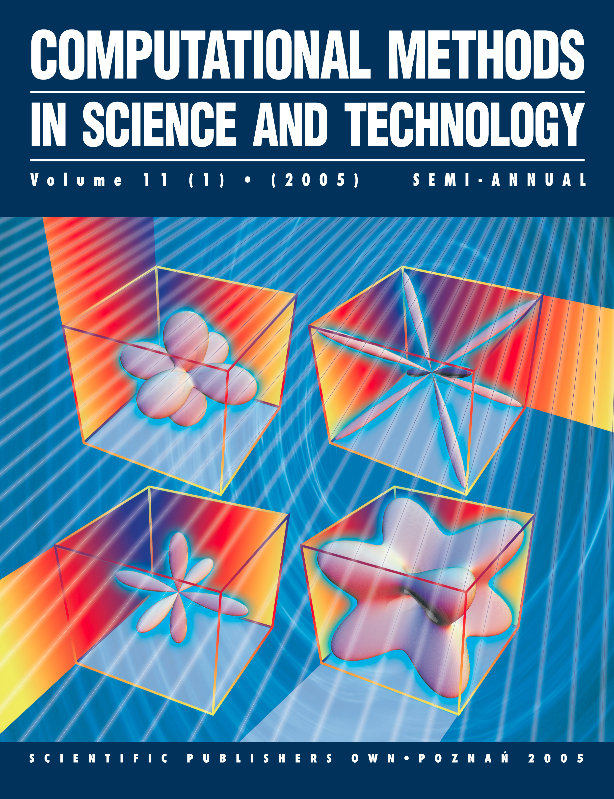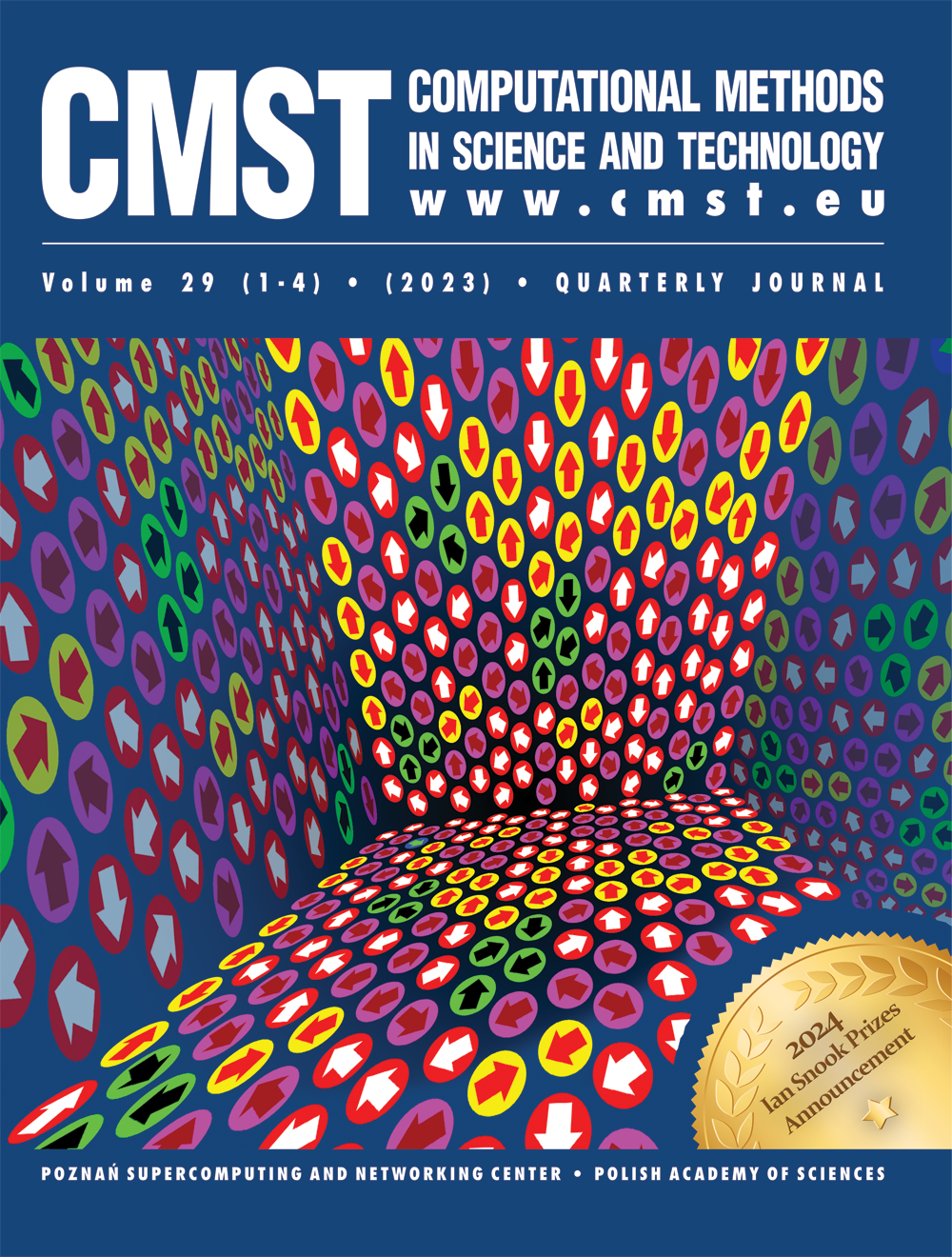NEGATIVE POISSON’S RATIOS FROM ROTATING RECTANGLES
Grima Joseph N. 1*, Alderson Andrew 2, Evans Kenneth E. 3
1 Department of Chemistry, University of Malta, Msida MSD 06, Malta
2 Centre for Materials Research and Innovation, Bolton Institute, Bolton BI3 5AB, U.K.
3 Department of Engineering, University of Exeter, Exeter, EX4 4QF, U.K.
Received:
Rec. 27 November 2004
DOI: 10.12921/cmst.2004.10.02.137-145
OAI: oai:lib.psnc.pl:566
Abstract:
Materials with a negative Poisson’s ratio exhibit the unexpected property of becoming fatter
when stretched and narrower when compressed. This counter-intuitive behaviour is known as ‘auxetic behaviour’ and imparts many beneficial effects on the material’s macroscopic properties. This paper discusses the potential of systems composed of rigid rectangles connected together through flexible hinges at their vertices. It will be shown that, on application of uniaxial loads, these rigid rectangles will rotate with respect to each other to form, in some cases, a more open structure hence giving rise to a negative Poisson’s ratio.
References:
[1] K. E. Evans, M. A. Nkansah, I. J. Hutchinson, and S. C. Rogers, Nature, 353, 124 (1991).
[2] L. J. Gibson, M. F. Ashbv, G. S. Schajer, and C. I. Robertson, Proc. R. Soc. Lond. A 382, 25
(1982).
[3] R. F. Almgren, J. Elast., 15, 427 (1985).
[4] I. G. Masters and K. E. Evans, Compos. Struct. 35, 403 (1996).
[5] G. Y. Wei, J. Chem. Phys., 96, 3226 (1992).
[6] A. Alderson, J. Rasburn, S. Ameer-Beg, P. G. Mullarkev, W. Perrie, and K. E. Evans, Ind. Eng.
Chem. Res. 39, 654 (2000).
[7] K. W. Wojciechowski, Mol. Phys., 61, 1247 (1987).
[8] K. W. Wojciechowski, Phys. Lett. A, 137, 60 (1989).
[9] K. W. Wojciechowski and A. C. Branka, Phvs. Rev. A, 40, 7222 (1989).
[10] K. W. Wojciechowski, J. Phys. A: Math. Gen. 36, 11765 (2003).
[11] D. Prall and R. S. Lakes, Int. J. Mech. Sci. 39, 305 (1997).
[12] O. Sigmund, S. Torquato, and I. A. Aksav, J. Mater. Res. 13, 1038 (1998).
[13] C. W. Smith, J. N. Grima, and K. E. Evans, Acta Mater. 48, 4349 (2000).
[14] J. N. Grima, A. Alderson, and K. E. Evans, ‘Zeolites with negative Poisson’s ratios’, Paper
presented at the RSC 4th International Materials Conference (MC4), Dublin, Ireland P81 (1999).
[15] J. N. Grima and K. E. Evans, Chem. Comm. 1531 (2000a).
[16] J. N. Grima, and K. E. Evans, J. Mat. Sci. Lett., 19,1563 (2000b).
[17] J. N. Grima, PhD Thesis, University of Exeter, Exeter, UK (2000).
[18] Y. Ishibashi and M. Iwata, J. Phys. Soc. Jpn. 69, 2702 (2000).
[19] A. A. Vasiliev, S. V. Dmitriev, Y. Ishibashi and T. Shigenari, 2002, Phys. Rev. B, 65, 094101.
[20] G. Y. Wei and S. F. Edwards, Phvs. Rev. E, 58, 6173 (1998).
[21] V. V. Novikov and K. W. Wojciechowski, Phvs. Solid State, 41, 1970 (1999).
[22] R. Lakes, Science, 235, 1038 (1987).
[23] K. E. Evans, M. A. Nkansah, and I. J. Hutchinson, Acta Metall. Mater. 2, 1289 (1994).
[24] J. B. Choi and R. S. Lakes, J. Comp. Mat. 29, 113 (1995).
[25] N. Chan and K. E. Evans, J. Cellular Plast. 34, 231 (1998).
[26] J. N. Grima, R. Jackson, A Alderson, and K. E. Evans, Adv. Mat. 12, 1912 (2000).
[27] K. E. Evans, and B. D. Caddock, J. Phys. D: Appl. Phys. 22, 1883 (1989).
[28] J. F. Nye, Physical Properties of Crystals, (Oxford: Clarendon) (1957).
Materials with a negative Poisson’s ratio exhibit the unexpected property of becoming fatter
when stretched and narrower when compressed. This counter-intuitive behaviour is known as ‘auxetic behaviour’ and imparts many beneficial effects on the material’s macroscopic properties. This paper discusses the potential of systems composed of rigid rectangles connected together through flexible hinges at their vertices. It will be shown that, on application of uniaxial loads, these rigid rectangles will rotate with respect to each other to form, in some cases, a more open structure hence giving rise to a negative Poisson’s ratio.
[1] K. E. Evans, M. A. Nkansah, I. J. Hutchinson, and S. C. Rogers, Nature, 353, 124 (1991).
[2] L. J. Gibson, M. F. Ashbv, G. S. Schajer, and C. I. Robertson, Proc. R. Soc. Lond. A 382, 25
(1982).
[3] R. F. Almgren, J. Elast., 15, 427 (1985).
[4] I. G. Masters and K. E. Evans, Compos. Struct. 35, 403 (1996).
[5] G. Y. Wei, J. Chem. Phys., 96, 3226 (1992).
[6] A. Alderson, J. Rasburn, S. Ameer-Beg, P. G. Mullarkev, W. Perrie, and K. E. Evans, Ind. Eng.
Chem. Res. 39, 654 (2000).
[7] K. W. Wojciechowski, Mol. Phys., 61, 1247 (1987).
[8] K. W. Wojciechowski, Phys. Lett. A, 137, 60 (1989).
[9] K. W. Wojciechowski and A. C. Branka, Phvs. Rev. A, 40, 7222 (1989).
[10] K. W. Wojciechowski, J. Phys. A: Math. Gen. 36, 11765 (2003).
[11] D. Prall and R. S. Lakes, Int. J. Mech. Sci. 39, 305 (1997).
[12] O. Sigmund, S. Torquato, and I. A. Aksav, J. Mater. Res. 13, 1038 (1998).
[13] C. W. Smith, J. N. Grima, and K. E. Evans, Acta Mater. 48, 4349 (2000).
[14] J. N. Grima, A. Alderson, and K. E. Evans, ‘Zeolites with negative Poisson’s ratios’, Paper
presented at the RSC 4th International Materials Conference (MC4), Dublin, Ireland P81 (1999).
[15] J. N. Grima and K. E. Evans, Chem. Comm. 1531 (2000a).
[16] J. N. Grima, and K. E. Evans, J. Mat. Sci. Lett., 19,1563 (2000b).
[17] J. N. Grima, PhD Thesis, University of Exeter, Exeter, UK (2000).
[18] Y. Ishibashi and M. Iwata, J. Phys. Soc. Jpn. 69, 2702 (2000).
[19] A. A. Vasiliev, S. V. Dmitriev, Y. Ishibashi and T. Shigenari, 2002, Phys. Rev. B, 65, 094101.
[20] G. Y. Wei and S. F. Edwards, Phvs. Rev. E, 58, 6173 (1998).
[21] V. V. Novikov and K. W. Wojciechowski, Phvs. Solid State, 41, 1970 (1999).
[22] R. Lakes, Science, 235, 1038 (1987).
[23] K. E. Evans, M. A. Nkansah, and I. J. Hutchinson, Acta Metall. Mater. 2, 1289 (1994).
[24] J. B. Choi and R. S. Lakes, J. Comp. Mat. 29, 113 (1995).
[25] N. Chan and K. E. Evans, J. Cellular Plast. 34, 231 (1998).
[26] J. N. Grima, R. Jackson, A Alderson, and K. E. Evans, Adv. Mat. 12, 1912 (2000).
[27] K. E. Evans, and B. D. Caddock, J. Phys. D: Appl. Phys. 22, 1883 (1989).
[28] J. F. Nye, Physical Properties of Crystals, (Oxford: Clarendon) (1957).



